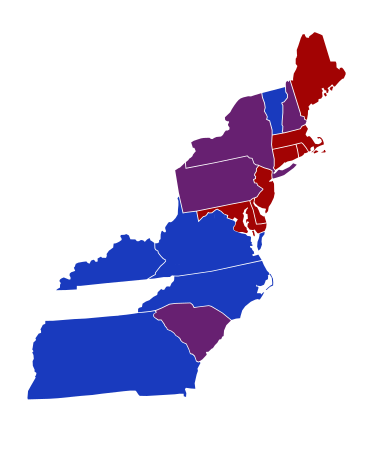| 3rd United States Congress | |
|---|---|
2nd ← → 4th | |
 Congress Hall (2007) | |
March 4, 1793 – March 3, 1795 | |
| Members | 30 senators 105 representatives 1 non-voting delegates |
| Senate majority | Pro-Administration |
| Senate President | John Adams (P) |
| House majority | Anti-Administration |
| House Speaker | Frederick Muhlenberg (A) |
| Sessions | |
| Special [a] : March 4, 1793 – March 4, 1793 1st: December 2, 1793 – June 9, 1794 2nd: November 3, 1794 – March 3, 1795 | |
The 3rd United States Congress was a meeting of the legislative branch of the United States federal government, consisting of the United States Senate and the United States House of Representatives. It met at Congress Hall in Philadelphia, Pennsylvania from March 4, 1793, to March 4, 1795, during the fifth and sixth years of George Washington's presidency.
Contents
- Major events
- Major legislation
- Constitutional amendments
- Treaties
- Faction summary
- Senate
- House of Representatives
- Leadership
- Senate 2
- House of Representatives 2
- Members
- Senate 3
- House of Representatives 3
- Changes in membership
- United States Senate
- House of Representatives 4
- Committees
- Senate 4
- House of Representatives 5
- Joint committees
- Employees
- Senate 5
- House of Representatives 6
- See also
- Notes
- References
- External links
The apportionment of seats in the House of Representatives was governed by the Apportionment Act of 1792 and based on the 1790 census. The Senate had a Pro-Administration majority, and the House had an Anti-Administration majority.








